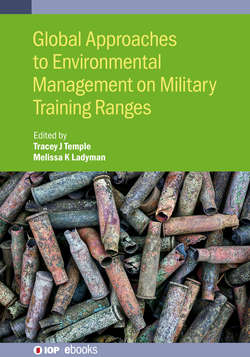Читать книгу Global Approaches to Environmental Management on Military Training Ranges - Tracey Temple - Страница 13
На сайте Литреса книга снята с продажи.
1.1 Introduction
ОглавлениеMilitary training ranges are essential to maintaining defence capability and environmental issues need to be appropriately managed to ensure continuing legal compliance and training capacity [1]. Severe contamination incidents, such as groundwater contamination, arising from poorly managed sites may result in a limitation on activities such as use of particular munitions [2] or closure of the site. In addition, many training ranges may undergo a change of use, or release to the public, which under current law would require the site to be returned to its original state [3]. In some cases, the cost of remediation may be so great that it is more economical to continue to maintain the land even though it is no longer in use. Environmental management is a widely used framework that enables identification and mitigation of environmental impacts. However, effective environmental management requires a thorough understanding of the site (above and below the surface), knowledge of the sources of potential contamination and areas, flora and fauna that are potentially affected (adversely or positively) by the contaminants. Often the source of potential impacts is readily identifiable, e.g. chemicals from munitions or spillages. However, once a chemical enters the environment it becomes more difficult to determine where it might travel (through soil and water) and how it may interact with the environment (degradation and absorption to soil). The environmental impact may be far removed from the source of contamination.
This chapter therefore aims to outline the critical environmental parameters and physicochemical properties of explosives that influence the behaviour of contaminants in military training environments. Focussing on how to progress from a simple conceptual diagram to a comprehensive knowledge of the potential environmental impacts from a selection of high explosives on military training ranges, the initial conceptual approach enables preliminary evidence-based estimations to be made, which will highlight any data gaps and guide the next steps, e.g. field sampling, laboratory experiments or predictive modelling.
